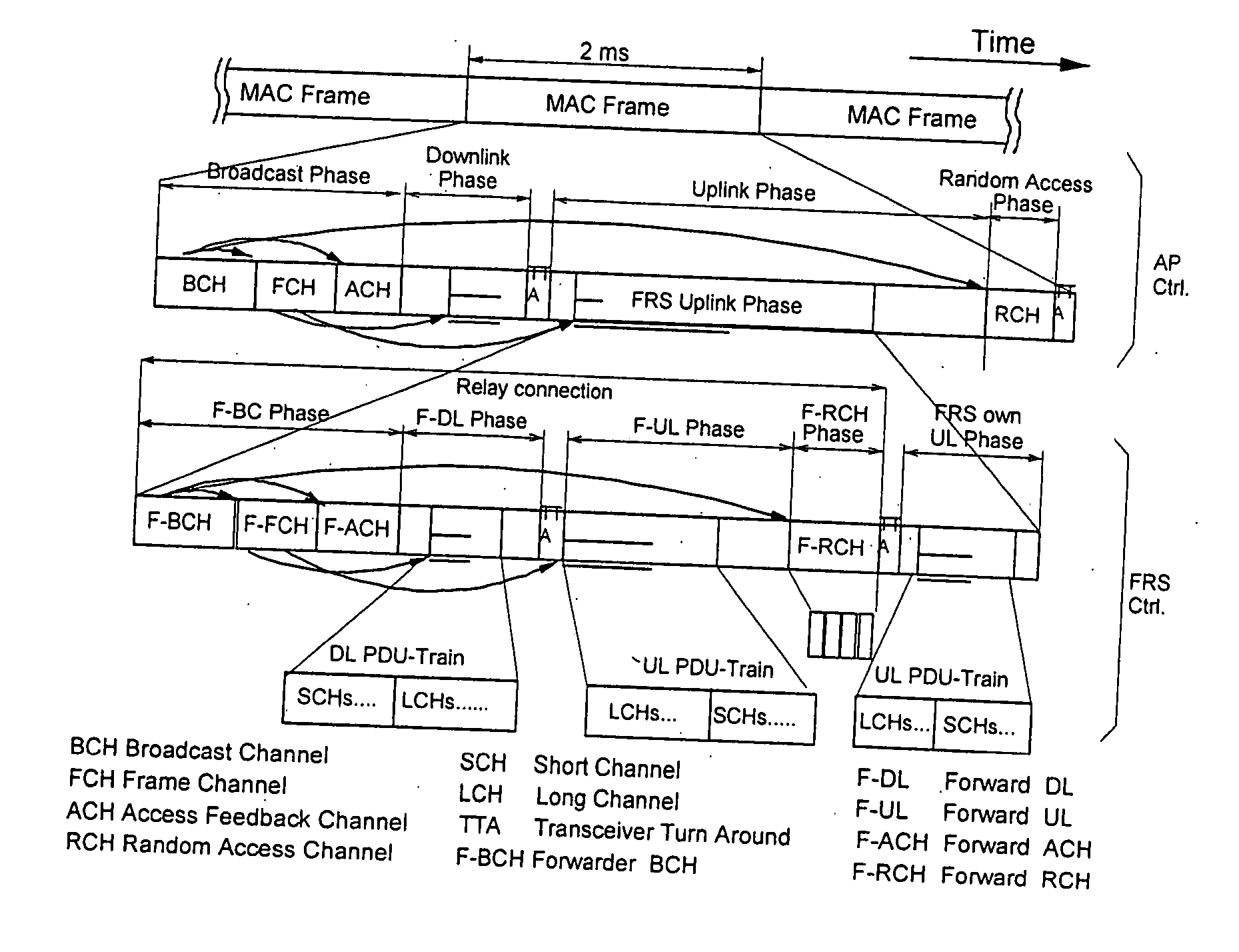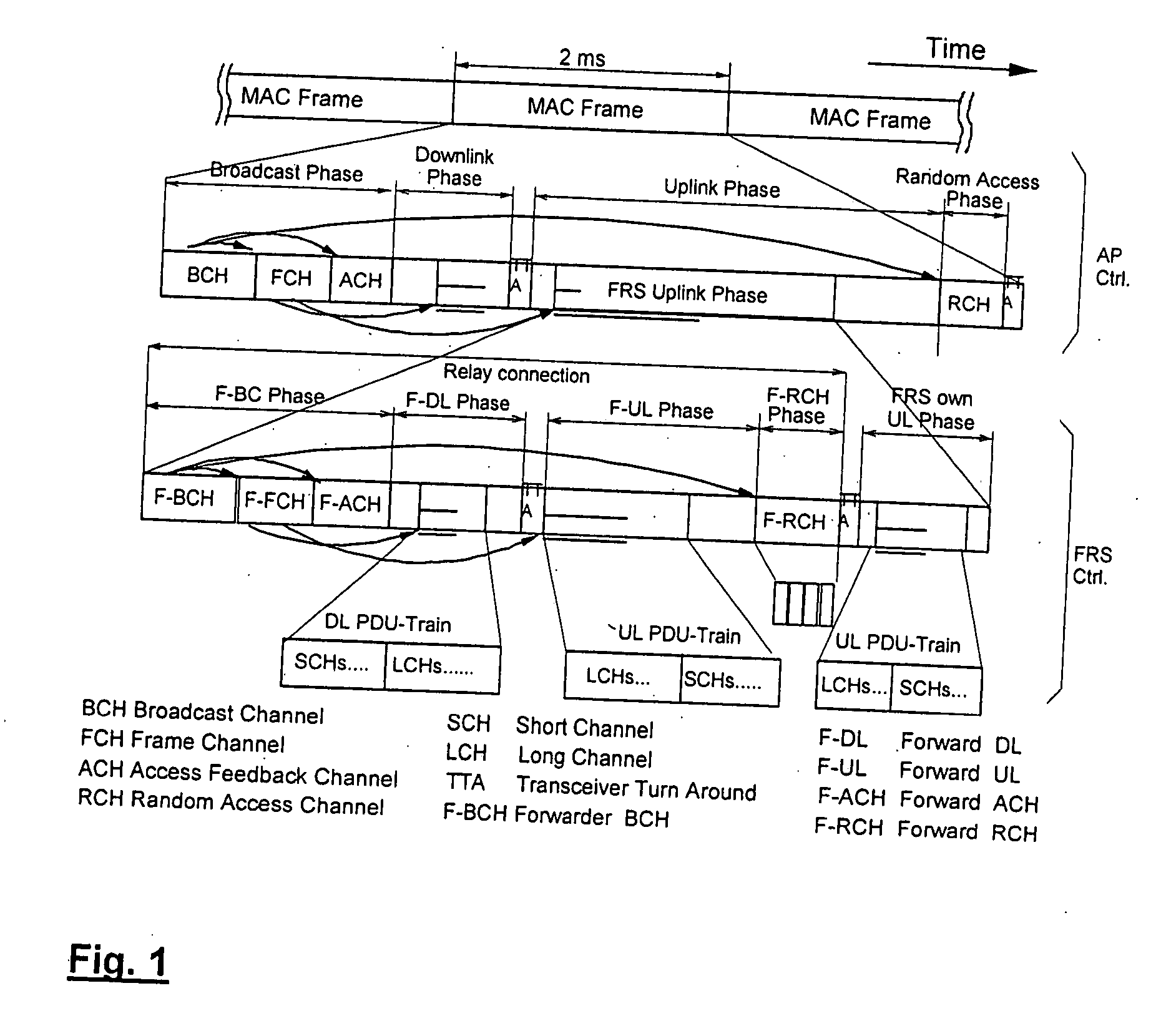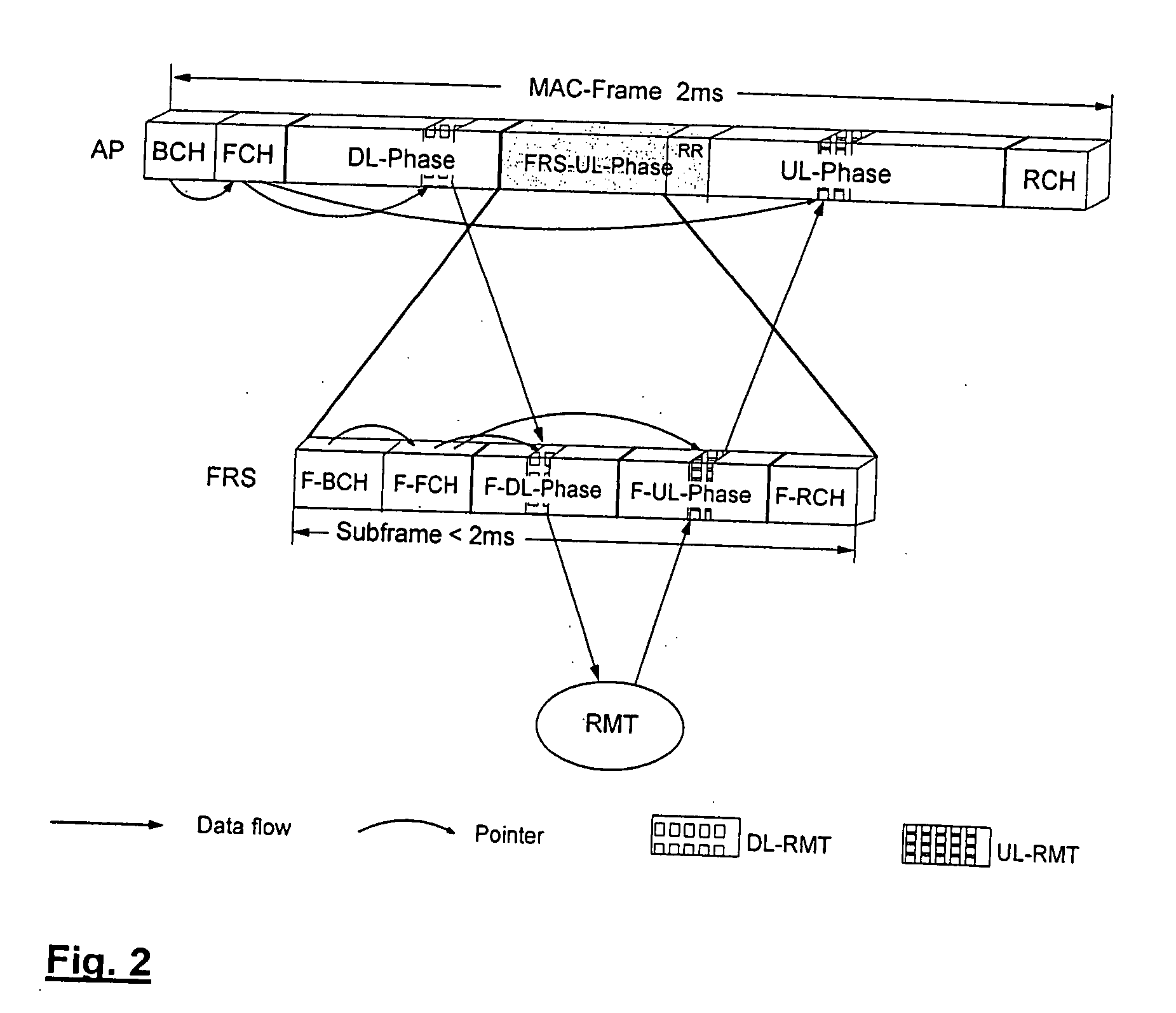Cellular wide-area radio communications system with relay-enhanced cells
a radio communication system and cell technology, applied in the field of cellular wide-area radio communications systems, can solve the problems of disadvantageous application of this cellular concept to the requirements of future mobile radio communications systems, unfair transmission rate assignment, and inability to guarantee a certain end-to-end throughput of mobile stations that can be located anywhere in the cell, so as to reduce the capacity left, reduce the transmission power level, and reduce the effect of capacity blockag
- Summary
- Abstract
- Description
- Claims
- Application Information
AI Technical Summary
Benefits of technology
Problems solved by technology
Method used
Image
Examples
Embodiment Construction
[0110] The present invention proposes to deploy relay stations in a wide-area cellular radio communications system to achieve a more homogenous distribution of the C / I or end-to-end throughput over the coverage area and thus to increase the spectral efficiency of such a system.
[0111] In the sequel, a HIPERLAN2 (H2) system with relay stations will be described as an exemplary embodiment of the present invention. Therein, the base station in each cell will be denoted as Access Point (AP), the mobile stations will be denoted as Mobile Terminals (MTs), and the relay stations will be assumed fixed and denoted as Fixed Relay Stations (FRS). It should however be noted that the present invention can equally well be used with different kinds of radio communications systems, in particular radio communication systems that are based on Code Division Multiple Access (CDMA) and systems based on Frequency / Time Division Multiple Access (FDMA / TDMA).
[0112] The HIPERLAN2 (H2) system is described her...
PUM
 Login to View More
Login to View More Abstract
Description
Claims
Application Information
 Login to View More
Login to View More - R&D
- Intellectual Property
- Life Sciences
- Materials
- Tech Scout
- Unparalleled Data Quality
- Higher Quality Content
- 60% Fewer Hallucinations
Browse by: Latest US Patents, China's latest patents, Technical Efficacy Thesaurus, Application Domain, Technology Topic, Popular Technical Reports.
© 2025 PatSnap. All rights reserved.Legal|Privacy policy|Modern Slavery Act Transparency Statement|Sitemap|About US| Contact US: help@patsnap.com



